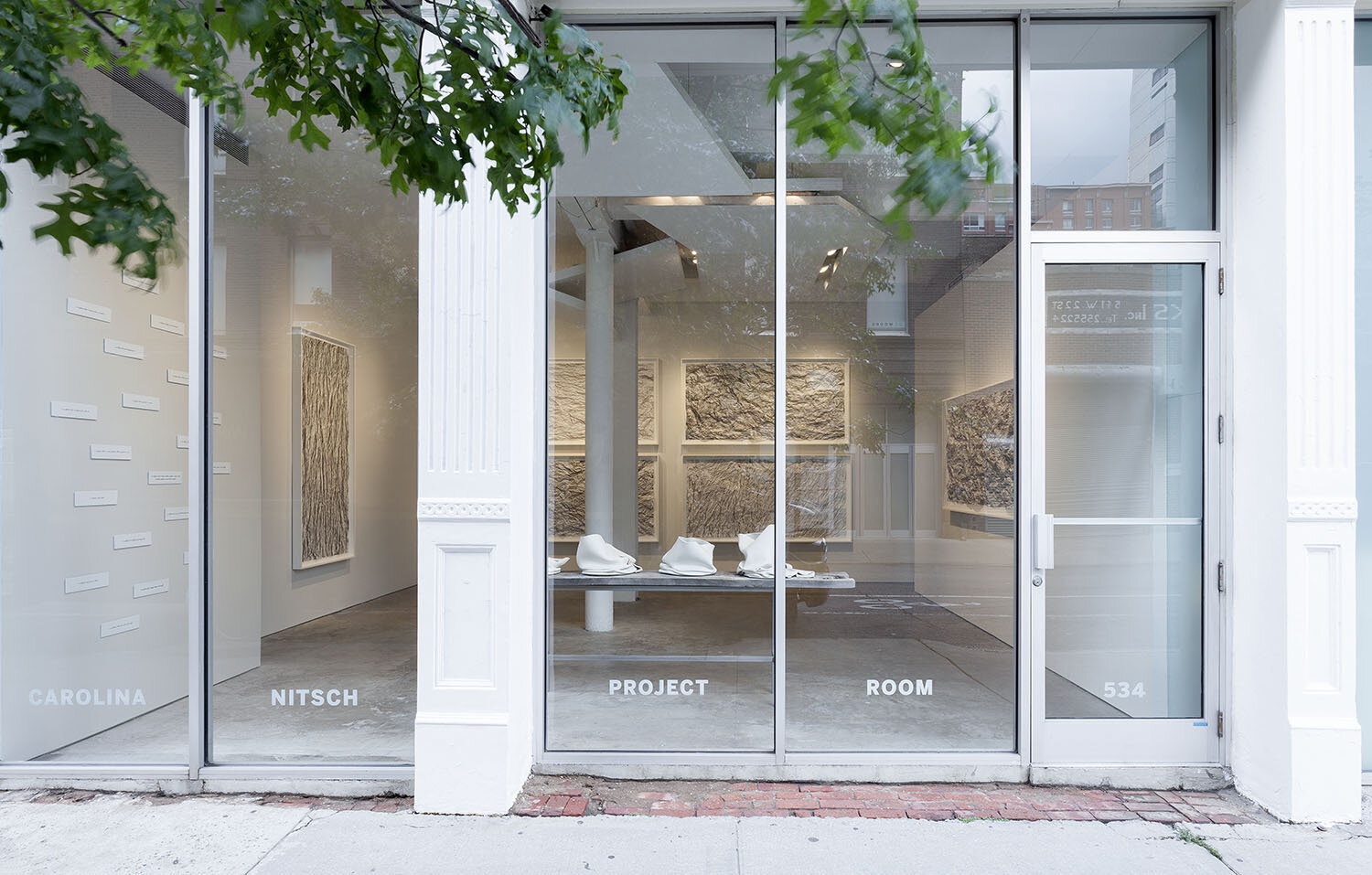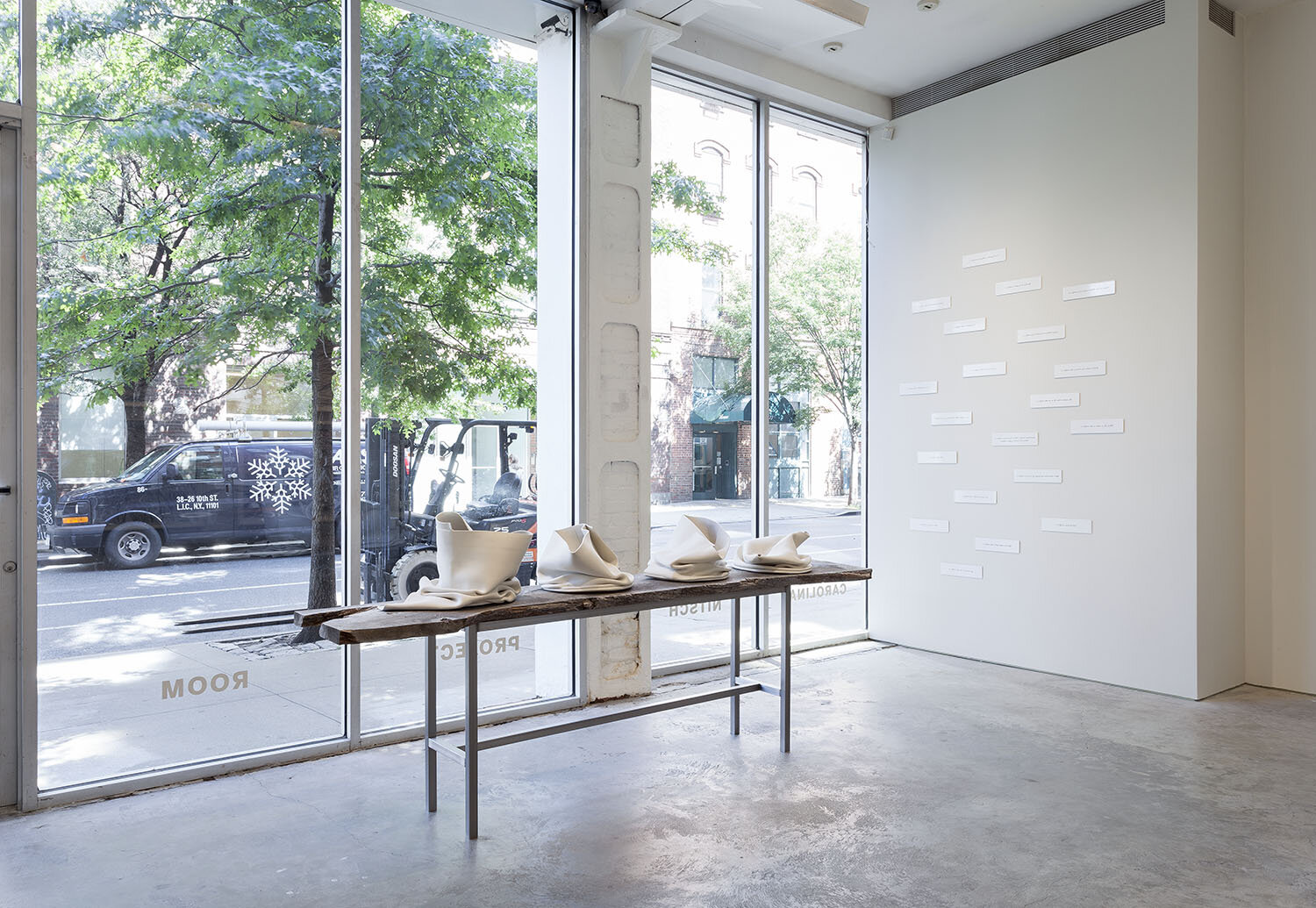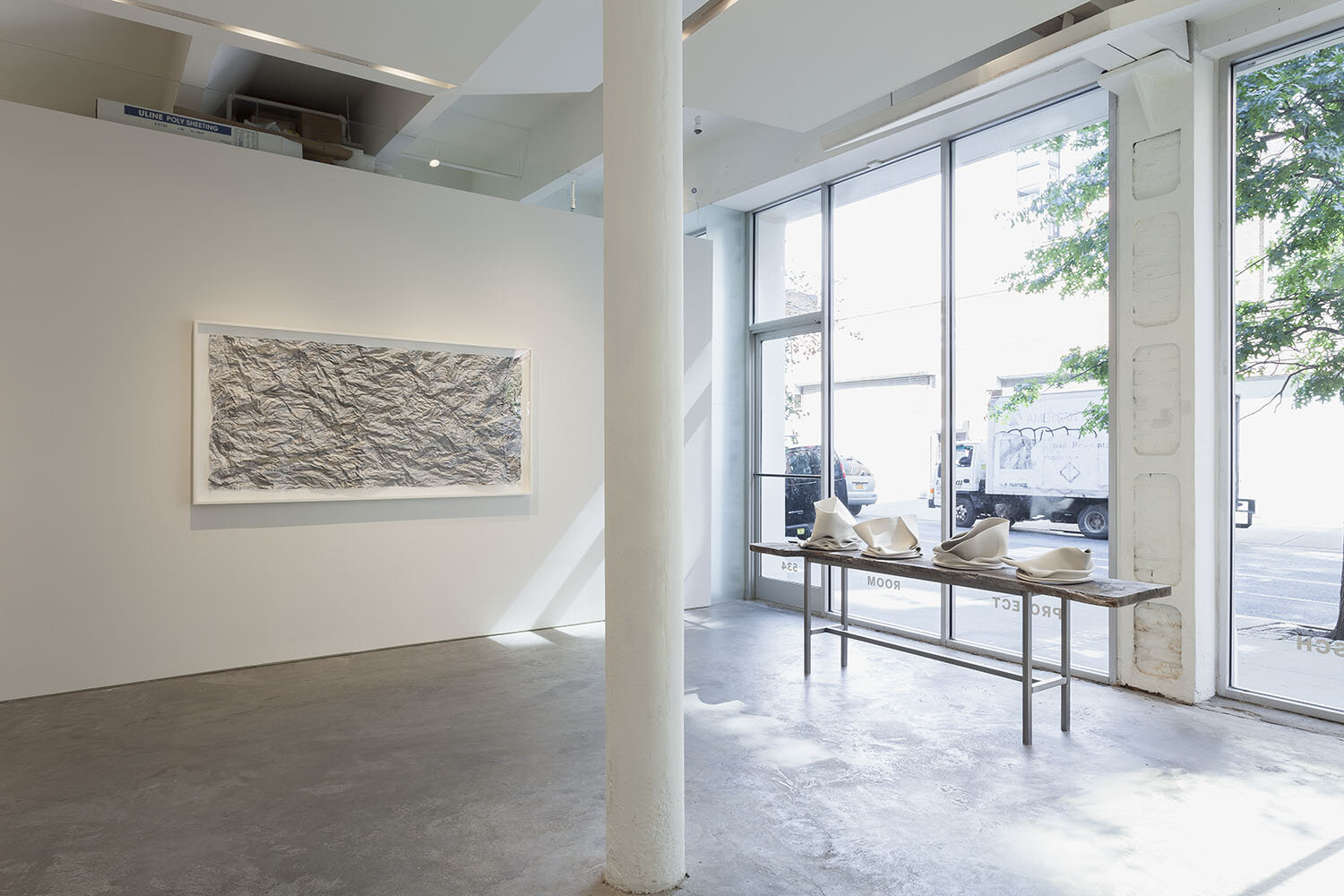




TOPOGRAPHIC ITERATIONS, 2014
SOLO EXHIBITION AT CAROLINA NITSCH PROJECT ROOM
SEPTEMBER 12 - NOVEMBER 15, 2014
Topographic Iteration I-VI, 2014
Pigment print on Masa Japanese paper, crumpled by hand
Edition of 6 variants
48 x 84" (101.6 x 213.36 x 5.08 cm) each
All photos by Joerg Lohse
PRESS RELEASE
We are pleased to announce the exhibition Alyson Shotz: Topographic Iterations, at Carolina Nitsch Project Room, 534 W. 22nd St, New York. Alyson Shotz is known for her work investigating space and light in the sculptural realm. On view will be three recent series, Topographic Iterations, Recumbent Folds, and Imaginary Sculptures.
The textured surfaces of the Topographic Iterations series appear like a birds-eye view of a desert landscape— fissures and mounds across a speckled grey terrain. Closer examination of the prints reveals that each work is actually a high resolution photograph taken of a crumpled piece of white Japanese Masa paper, which is then printed on another sheet of Masa paper at the same scale, and then crumpled once more. The final object is an edition of 6 unique variants resulting in an interaction of printed (replicated) crumples and real crumples. Through this process, each print becomes its own unique work, coming off the wall like an abstracted topographic map.
Also on view are Recumbent Folds, porcelain clay sculptures that appear to be soft, malleable folds of fabric, yet are in fact rigid and fixed. Each sculpture is made from slabs of porcelain clay that are rolled and then dropped at various heights so that the velocity at which they fall, humidity, and material properties of the clay determines their shape. The physical act of crumpling or folding and then letting go are essential to both of these series. While Shotz controls the initial steps, the final works are created through gravity and more random actions. These works reveal the tension between holding artistic control over forms and the relinquishing of that power.
The Imaginary Sculptures, white enamel signs printed in black italics, use language to conjure both feasible and impossible forms in the mind of the viewer with phrases such as, “a sculpture buried underground” and “a sculpture placed between a blade of grass.” Among the fantastical and the viable there are also signs that read like a call to action or directions for making: “a sculpture that is thrown from the window” or “a sculpture made of flour, submerged in oil.” These phrases share affinities with Richard Serra’s Verb List (1967-68), which Serra used as a guide to making sculptures with verbs like “to gather” or “to fold.” Many of Shotz’s Imaginary Sculptures—“a sculpture that drifts” and “a sculpture expands and contracts slowly”—read as the artist’s journal notes. Given that every reader imagines something different, each phrase represents an infinite amount of possible forms. At the crux of these works is the notion that every work of art exists in the imagination first and last—each beginning in the mind of the artist and continuing in the memory of the viewer.
Alyson Shotz has an upcoming solo exhibition at the Wellin Museum of Art at Hamilton College in Clinton, NY accompanied by a 78 page monograph with essays by Nat Trotman, Associate Curator, Solomon R. Guggenheim Museum of Art, and Veronica Roberts, Curator of Modern and Contemporary Art, Blanton Museum of Art. She has had solo exhibitions at the Indianapolis Museum of Art, Espace Louis Vuitton, Tokyo, The Phillips Collection, Washington, DC, The Nasher Sculpture Center, Dallas, and The Wexner Center for the Arts, Columbus, OH, among others. Her work is included in the permanent collections of the Solomon R. Guggenheim Museum, The Hirshhorn Museum and Sculpture Garden, The San Francisco Museum of Art, The Eli and Edythe Broad Art Museum, the Indianapolis Museum of Art, the Whitney Museum of Art.